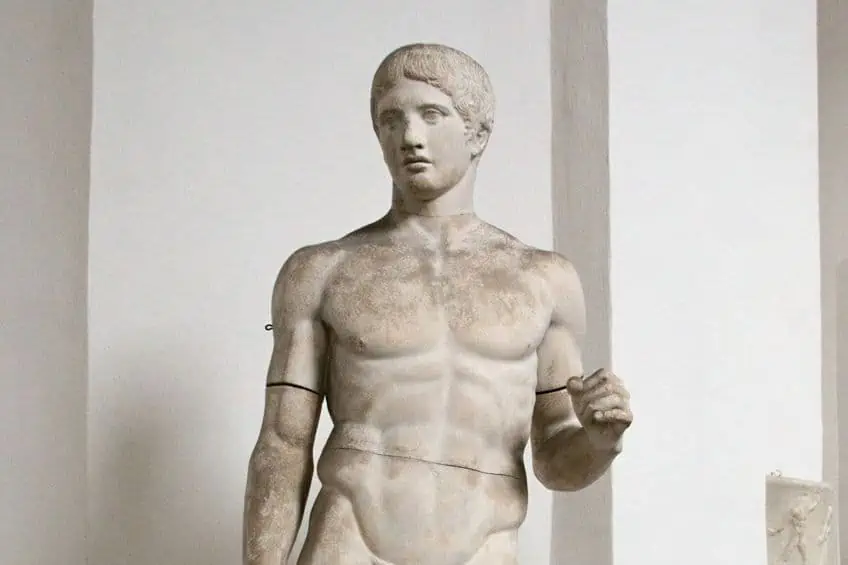Proportion and Scale in Art – The Principles of Art Proportion
The expression “size matters” is particularly pertinent in the context of visual art. Scale and proportion are principles of art that can be used to create dramatic imagery. Small objects and creatures can be made much bigger than they are, creating suspense. Overwhelming surroundings can convey helplessness. By manipulating the size, scale, or proportion of various elements, artists cause viewers to reconsider their perceptive assumptions.
Contents
The Colossal Impact of Proportion and Scale in Art
Proportion and scale in art refer to the location and size of one element in relation to another. As principles of art, proportion and scale are often used interchangeably, but they are different. Using various elements of art such as line, shape, or color, proportion and scale in art can change the impact and meaning of art in various ways. This article will highlight the specific definitions and differences between scale and proportion as well as provide some proportion and scale in art examples.
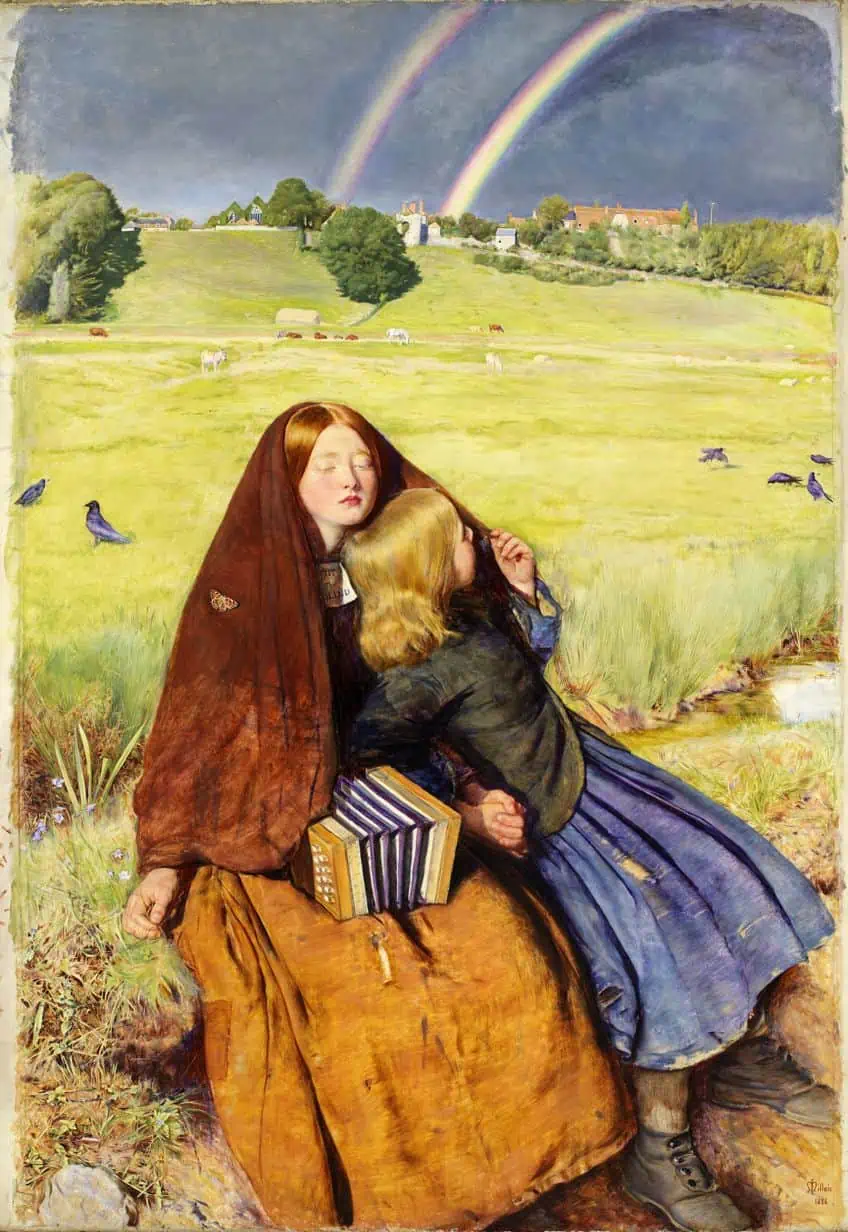
What Is Scale in Art?
Size refers to the overall physical dimensions of an object. Scale is not just the size of objects, but their comparative size or how big they are in relation to other elements or objects. Artists use scale to create different effects, which impacts their viewer and their perception of size. A change in scale means harmless creatures can become terrifying, and horrifying monsters are made adorable. Depending on the desired effect, artists may use life-size, large-scale, or small-scale art. In terms of scale, humans tend to use themselves as a reference for comparison. The size of the human body helps us determine scale.
The term “life-sized” is often used to describe how big or small an artwork is in relation to the viewer.
An artwork that is larger than a human body is referred to as large-scale art. Large-scale art is impactful because of its impressive size and creates emphasis which affects the meaning conveyed by an artwork. On the other hand, small-scale art can also create emphasis. It can be used to draw focus to delicacy and detail in an artwork. One of the main appeals of miniature work is that as the art would be smaller than the human body, a viewer can observe the artwork from unique vantage points.
What Is Proportion in Art?
When it comes to principles of art, proportion is key. While they have similarities, there are important differences between scale and proportion. While scale refers to the size of one element in relation to another, proportion refers to the scale of the parts within an element. That is the relationship between one part of an object to another. Thus, in terms principles of art, proportion is also about relativity, but it compares parts within one whole.
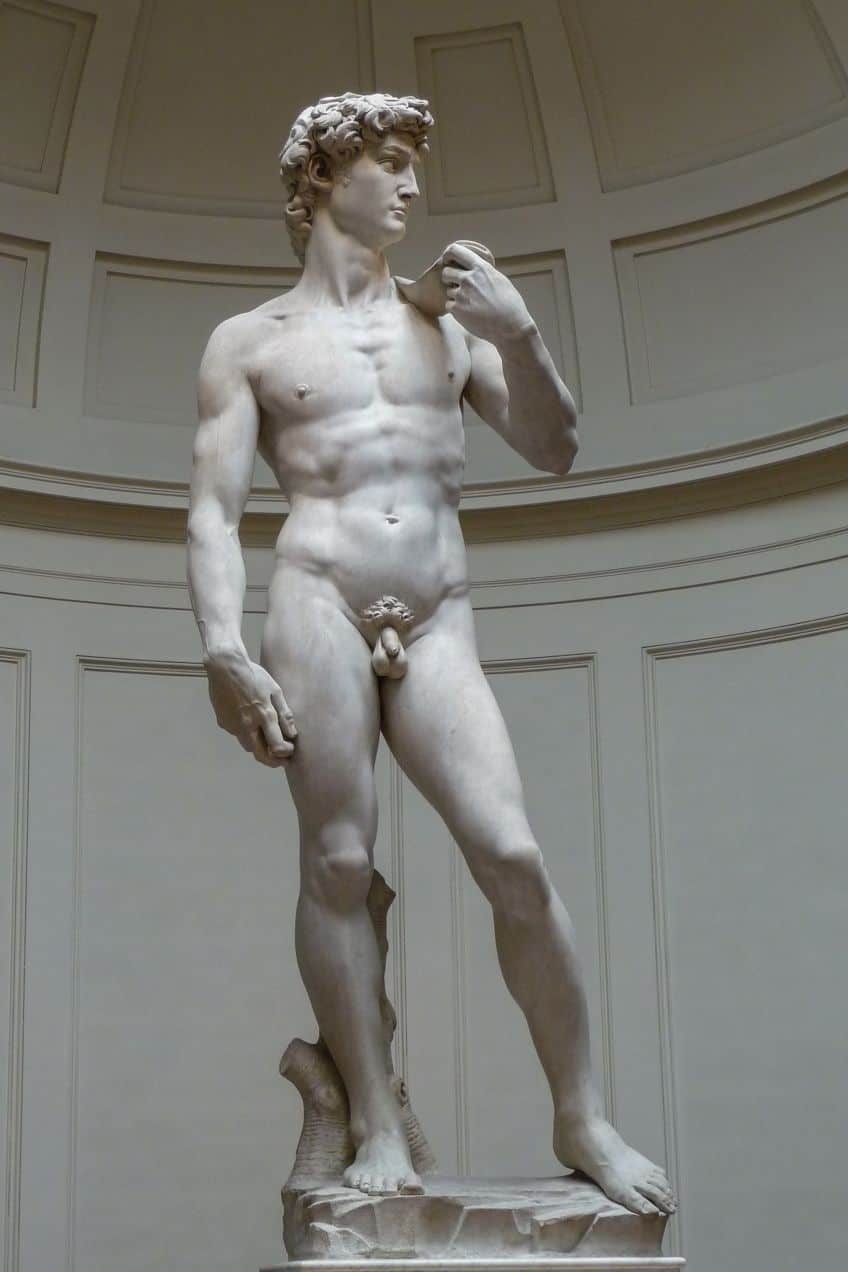
Because it is based on a comparison of sizes, shapes, and quantities, proportion can be seen as an extension of balance. The proportionality of elements can be manipulated through different types of proportion such as standard proportion, which tends to create harmony. But proportion can also be used to create emphasis. Depending on their altered proportions, elements or objects can appear absurd or comedic. Once again, human anatomy is an important compass when it comes to interpreting proportions. For example, human proportions vary and are different at various ages. Babies’ heads are proportionally larger than the rest of their bodies. Artists can decipher facial proportions by comparing one part of a face to another.
Of course, anatomy is not the only purpose of proportion. Any aspect of a composition could be affected through an understanding of proportion.
Scale in Art Examples
The scale in art examples below show how artists have experimented with scale in their art. Scale can be used to convey meaning, or simply to make an artwork more interesting. Some of the best scale in art examples are found in sculpture where everyday objects or creatures can either be blown up to a monumental scale or compressed to a tiny size.
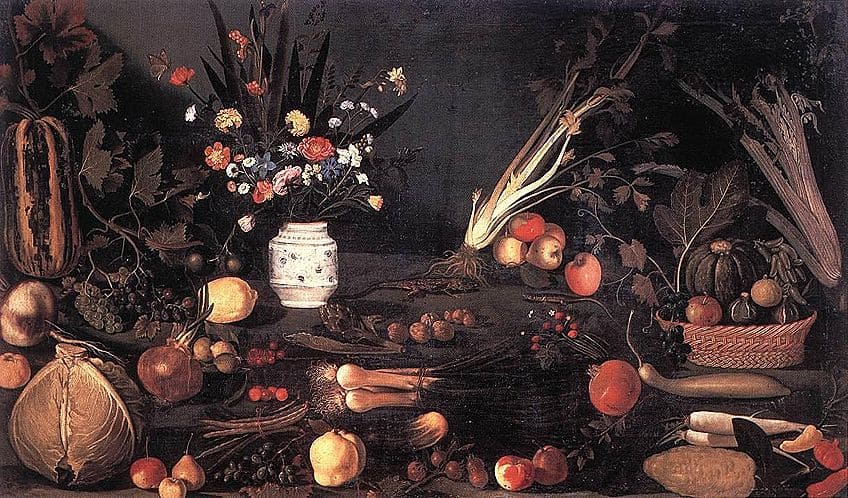
Ron Mueck’s Dead Dad (1996)
| Artwork | Dead Dad |
| Artist | Ron Mueck (1958 – Present) |
| Medium | Mixed media |
| Dimensions (cm) | 20 x 38 x 102 |
| Current Location | Unknown |
One of Ron Mueck’s most well-known works Dead Dad is an example of small-scale art. Mueck is recognized for his Hyperrealist sculptures of the human form. Even though they are extraordinarily lifelike in appearance, these sculptures incorporate a manipulation of the standard conventions of scale. In their experimentations with scale, Mueck’s figures are often much smaller or larger than they would logically be in real life. Because the figure is so perfectly proportioned and lifelike, photographs of Dead Dad may not reveal that it is not scaled to life. It is only when viewing it in person or observing images of other people viewing it that one can tell that this object has been scaled down.
Typically, this comparison of its size with something else – namely the human body, allows a viewer to determine the scale of this artwork.
The scale reduction of this magnificently mortal figure intensifies the sense of loss. Mueck uses scale as a psychological tool, causing his viewer to consider death as a definite process of decline. No longer a source of authority, Mueck’s father figure is reduced in relation to his son, or any viewer who could easily pick up and cradle his lifeless likeness. This deviation from reality solicits a strong emotional response from the viewer.
Louise Bourgeois’ Maman (1999)
| Artwork | Maman |
| Artist | Louise Bourgeois (1911 – 2010) |
| Medium | Stainless steel, bronze, and marble |
| Dimensions (cm) | 927 x 891 x 1024 |
| Current Location | Tate Modern, London, United Kingdom |
Louise Bourgeois’ stainless steel, bronze, and marble sculpture Maman is an example of large-scale art. It depicts a monumental spider whose spherical head, and body are suspended high above the ground, supported by eight slender legs ending in sharp points. The viewer can walk underneath the sculpture where they see a meshed sac with seventeen gray and white marble eggs gleaming in the darkness of an under-body cavity.
At over 33 feet wide and 30 feet high, the sculpture is the largest in Bourgeois’ long career. However, the range of scale in the artist’s spider sculptures is vast, with the smallest one being manifested as a 4-inch brooch.
This exercise in scale is a pivotal revelation of Bourgeois’ skill. The artist uses her larger-than-life installation to complicate the notion of an itsy-bitsy spider. Maman is an evocation of emotions like discomfort, fear, and vulnerability. This scaled-up piece is impactful because the powerful shadow it casts is not only psychological but also physical.
Proportion in Art Examples
Artworks that display standard proportion are usually more realistic and contain a sense of harmony. Altered proportion can appear more dynamic and is often referred to as exaggeration. Elements that are out of proportion such as a head that is too big or too small for the body, appear distorted or unrealistic. But standard proportion is by no means a prerequisite for art.
In fact, using elements that are out of proportion or have altered proportion can often be more effective.
Polykleitos’s Doryphoros (c. 450-440 B.C.)
| Artwork | Doryphoros |
| Artist | Polykleitos (480 BC – 420 BC) |
| Medium | Bronze |
| Dimensions (cm) | 213 |
| Current Location | Lost |
The notion of proportion has its roots in ancient Greece when artists began using systems of measurement to create more realistic but simultaneously more idealistic portrayals of the human body. They created what is known as the Greek canon, which used the size of the head as an increment of measurement to produce their version of proportional anatomy. According to them, the average human body had a proportional height of six and a half to seven heads whereas the ideal human body was seven to eight heads tall.
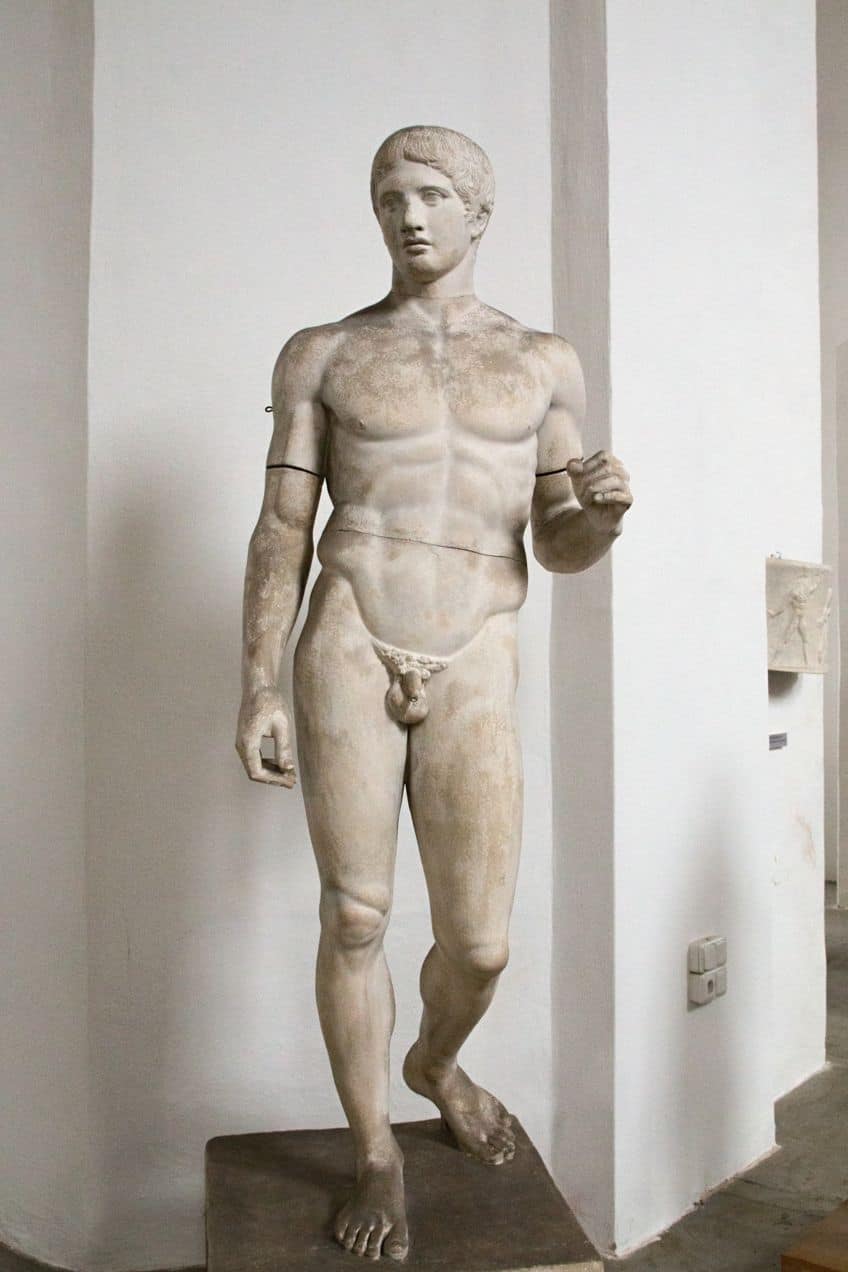
The idealized physique in the Greek canon was typified by symmetry. Ancient Greek sculpture almost always portrayed heroic athletes, warriors, or gods with well-defined muscles and youthful masculinity. To emphasize the altered proportion of these idealized figures in detail, Classical sculptures often depict their subjects in the nude. Of course, the ideal proportions varied depending on the artist. The ancient Greek sculptor Polykleitos cared deeply about what the human body looked like and was known for his distinct use of proportion in art. Using mathematical formulas to perfect his proportions, Polykleitos presented his sculpture Doryphoros, which stands at approximately six feet 11 inches tall, as the “ideal man.”
Andrew Wyeth’s Christina’s World (1948)
| Artwork | Christina’s World |
| Artist | Andrew Wyeth (1917 – 2009) |
| Medium | Egg tempera on gessoed panel |
| Dimensions (cm) | 82 x 121 |
| Current Location | Museum of Modern Art, New York City, United States |
Christina’s World is a painting by Andrew Wyeth inspired by the artist’s neighbor Anna Christina Olson. The subject had developed a degenerative muscle condition as a child, which caused her to lose her ability to walk. Not wanting to use a wheelchair, Olson preferred to carry her lower body with her arms as she moved. In his highly detailed depiction, Wyeth intended to highlight Christina’s strength and resilience.
Christina is depicted by herself, wearing a pale pink dress, and gazing over a vast field. Other than the big, empty spacious field, there is not much else, except a farmhouse and a shed in the distance. The use and amount of space Wyeth incorporates creates emphasis. Christina is the largest object in the painting. If one were to compare her size to that of the objects, one might wrongly assume that the image is out of proportion. She is bigger than the house and the shed because she is in the foreground. Additionally, she is placed in the center of the composition. Therefore, she becomes the focal point and carries most of the visual weight in the image. While a person is not heavier than a house or a shed in real life, this proportional technique makes Christina’s World both a psychological landscape and a portrait, depicting a state of mind as well as a place.
Human beings have an intrinsic perception of size, scale, and proportion. Therefore, these are vital principles of art. However, artists sometimes do not use proportions because perfect fractions and mathematical formulas can become monotonous. Rather than committing to exact formulae, the aim of understanding proportion and scale in art is to create harmonious compositions that are both pleasing to the eye, impactful, and dynamic. In addition, artists can use proportion and scale in art to create more interesting compositions that communicate meaning and result in more dynamic ways of seeing.
Frequently Asked Questions
Did Ancient Humans Use Scale in Art?
Many artifacts of the ancient world feature scale in art examples. The Venus of Willendorf (ca. 30,000 BC) is one of the world’s earliest artworks. The minuscule fertility sculpture could fit in the palm of one’s hand. A tiny scale that was suited to its nomadic context.
What Is Proportion in Art During the Renaissance?
Because it was based on a revival of Classicism, the Renaissance was influential in its study of proportion. Inspired by a first-century Roman architect named Vitruvius and his notion of the ideal human proportions, Leonard da Vinci created the iconic Vitruvian Man (1490).
Does Anime Use Proportion and Scale?
The artists who produce Japanese manga and anime use proportion to create their iconic characters. The characters’ torsos are usually depicted with somewhat realistic proportions, but their eyes are made larger, allowing for more complex expressions of emotion. Therefore, popular Japanese manga and anime are good proportion in art examples.
Jordan Anthony is a Cape Town-based film photographer, curator, and arts writer. She holds a Bachelor of Art in Fine Arts from the University of the Witwatersrand, Johannesburg, where she explored themes like healing, identity, dreams, and intuitive creation in her Contemporary art practice. Jordan has collaborated with various local art institutions, including the KZNSA Gallery in Durban, the Turbine Art Fair, and the Wits Art Museum. Her photography focuses on abstract color manipulations, portraiture, candid shots, and urban landscapes. She’s intrigued by philosophy, memory, and esotericism, drawing inspiration from Surrealism, Fluxus, and ancient civilizations, as well as childhood influences and found objects. Jordan is working for artfilemagazine since 2022 and writes blog posts about art history and photography.
Learn more about Jordan Anthony and about us.
Cite this Article
Jordan, Anthony, “Proportion and Scale in Art – The Principles of Art Proportion.” artfilemagazine – Your Online Art Source. March 14, 2023. URL: https://artfilemagazine.com/proportion-and-scale-in-art/
Anthony, J. (2023, 14 March). Proportion and Scale in Art – The Principles of Art Proportion. artfilemagazine – Your Online Art Source. https://artfilemagazine.com/proportion-and-scale-in-art/
Anthony, Jordan. “Proportion and Scale in Art – The Principles of Art Proportion.” artfilemagazine – Your Online Art Source, March 14, 2023. https://artfilemagazine.com/proportion-and-scale-in-art/.


